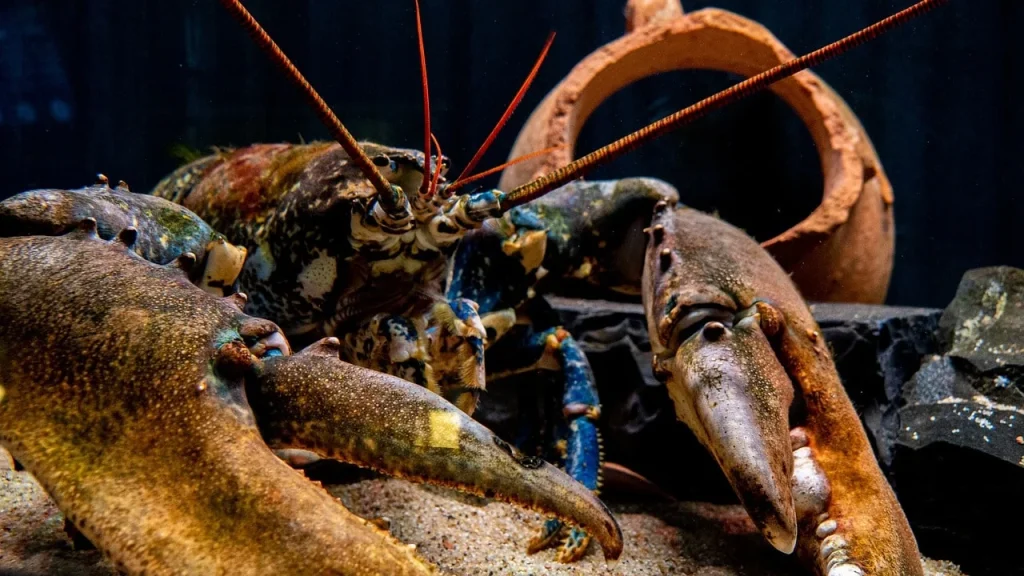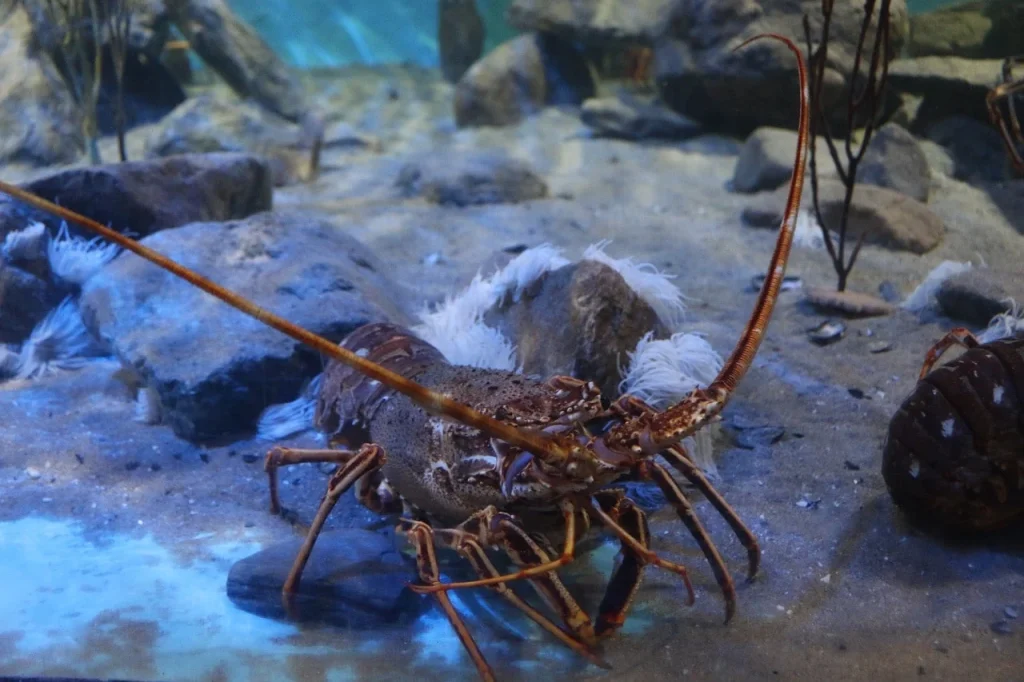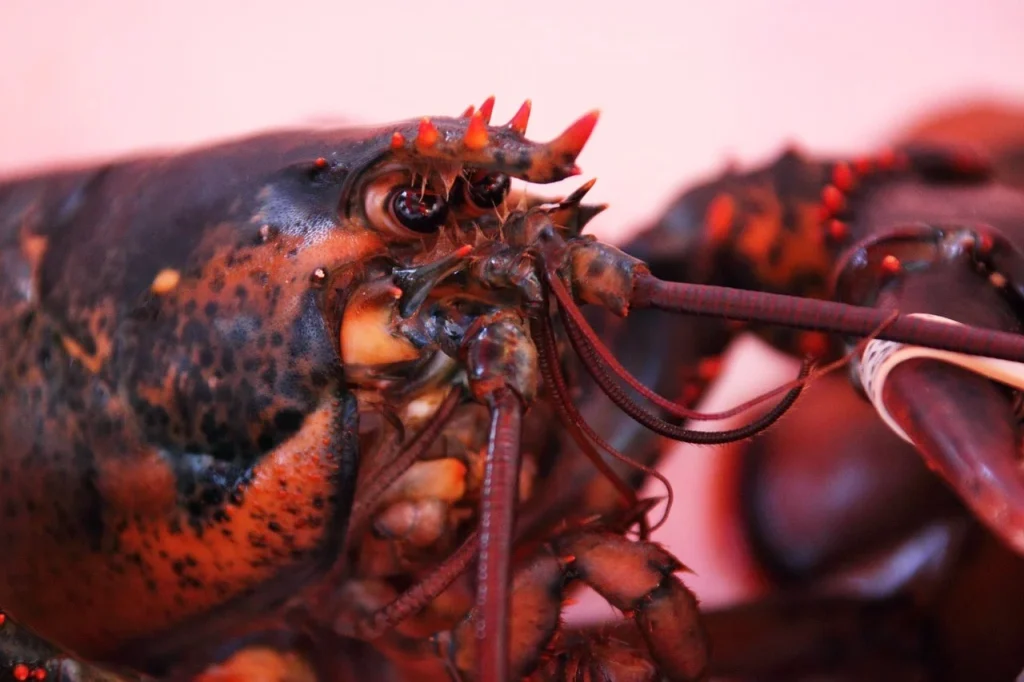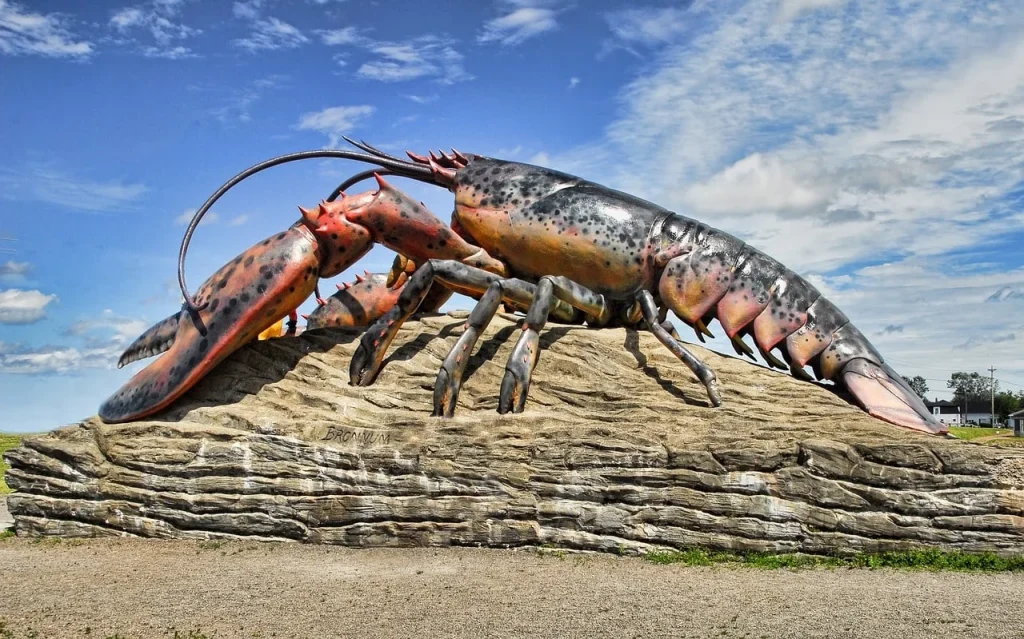What’s your first thought when you see a lobster? Is it a dinner plate, or do you see a creature that has roamed the ocean floors for millions of years? Lobsters are not just culinary delights; they are survivors from ancient times, possessing fascinating biological features and behaviors.
This article will uncover some fun facts about lobsters, shedding light on their mysterious lives and the astonishing world they inhabit. Prepare to be amazed by what lies beneath their armored exteriors!
Lobsters in the window, asleep in the tank. This is what it feels like to walk through time.
Mary Oliver
Lobster Facts
Get ready to explore the fascinating realm of lobsters! Make sure you absorb every fact, as you’ll need to remember them for the quiz waiting at the bottom of this page.
- These creatures can live up to 100 years, one of the longest lifespans in the invertebrate world.
- Their blood is blue due to the presence of copper-based hemocyanin.
- They can regenerate their limbs, which often become stronger than the originals.
- They are found to have specialized teeth in their stomachs, they use these to crush food before digestion.
- They communicate by squirting urine into each other’s faces.
- Instead of growing weaker with age, they actually become more fertile.
- Royalty once considered them as a poor man’s protein, commonly fed to prisoners and servants.
- Their nervous system is often studied by scientists interested in neurobiology.
- Some can carry live bacteria that bioluminesce, causing their shells to glow in the dark.
- They taste with their legs, thanks to tiny taste receptors located there.
- During the mating ritual, the female seduces the male by urinating in and around his den.
- Larvae can float for up to 8 weeks before settling on the ocean floor and growing into adulthood.
- The deepest dwelling species can be found at depths of over 3,700 meters in the ocean.

- One of the oldest known species is believed to have been around 100 million years ago.
- Their shells contain chitin and calcium carbonate, making them tough and mineral-rich.
- The largest ever caught weighed about 44 pounds and was caught off Nova Scotia, Canada.
- Capable of both walking forward and backwards, but usually prefer to walk backwards.
- Molting allows them to grow by shedding their old shell and forming a new, larger one.
- They have compound eyes that detect motion rather than forms, providing a 360-degree view.
- To avoid predators, some species can quickly snap their tails to swim backwards.
- Research suggests they may not age in the same way other organisms do, possibly due to the enzyme telomerase.
- They have been found to exhibit signs of both short and long-term memory in lab tests.
- Usually, their right claw is the dominant and larger one, often used for crushing.
- Their left claw is sharper and more refined, making it ideal for cutting and tearing food.
- Rarely, individuals can be half male and half female, a condition known as gynandromorphism.
- They can detach a limb on purpose, a process known as autotomy, to escape from predators.
- Before cooking, they can have various shell colors, including blue, yellow, green, and even white.
- They navigate using the Earth’s magnetic field, similar to birds.

- Contrary to many aquatic organisms, they prefer to be solitary unless it is mating season.
- Some ancient civilizations, such as the Vikings and Native Americans, considered them a staple food.
- The largest populations can be found in the cold waters of the North Atlantic.
- During warmer months, they migrate inshore to shallower waters to feed.
- Gastronomes highly prize the European species, often seen as superior in taste and texture.
- Scientists have discovered that some can carry and transmit a lethal shell disease that softens their shells.
- Future warming of ocean waters could threaten their populations due to habitat loss.
- They can cross vast distances in the ocean, sometimes spanning hundreds of miles.
- Protein-rich and low in fat, they are considered a luxurious and healthy food source.
- Their shells can absorb sound, making them less susceptible to predation by echolocating dolphins.

- Climate change impacts their reproductive cycles by altering the temperature of their spawning grounds.
- They exhibit a remarkable level of territorial behavior compared to other marine invertebrates.
- Historically, they were so abundant on the east coast of North America that they would wash ashore in piles.
- Their exoskeleton must be removed before consumption as it contains harmful bacteria and parasites.
- Increasing demand for them has led to innovative aquaculture practices aimed at sustainability.
- Their meat has a notable sweetness, making it highly prized in culinary circles.
- Fishermen use specialized traps, known as pots, to catch them without harming other marine life.
- Commercial fishing for them peaks during the fall months, particularly in New England.
- Special enzymes in their digestive system allow them to break down hard-shelled prey.
- Freshwater varieties exist but are significantly smaller and less known than their marine counterparts.
- Occasionally, albino (white) individuals are caught, lacking any pigment in their shells.
- Lobsters can exhibit handedness, with some favoring one side of their body over the other, much like humans.
Lobster Myths

Having explored the facts, we’re ready to tackle some of the myths. Let’s clear up misconceptions and uncover the truth about these marine marvels.
- Lobsters Mate for Life
It is often said that they pair off with lifelong partners, but this is not the case. Lobsters are actually quite promiscuous. A dominant male mates with multiple females during mating season, and each relationship lasts only a couple of weeks. - Lobsters Scream When Boiled
No sounds are produced by them when they are placed in boiling water, as they do not possess vocal cords. The hissing sound heard is steam escaping from their shells. - Lobsters Are All Red
While they are famously red when cooked, they are usually found in a variety of colors, such as blue, green, yellow, and sometimes even multi-colored in the wild. - Bigger Lobsters Taste Better
It is believed by many that larger lobsters offer more flavorful meat, but this is not true. Often, smaller lobsters are found to be sweeter and more tender than their larger counterparts. - Lobsters are Immortal
They are often thought to be immortal due to their ability to continually grow, but they are not immune to death. While they can live long lives, they eventually succumb to exhaustion or disease.
No products found.
Lobster Quotes

We continue to the next section, the quotes, Feel free to share yours in the comments so I can add them to the list.
The world is your lobster.
Arthur Daley
Arthur Daley, a fictional character from the British television series Minder, humorously twists the common phrase to suggest boundless opportunities.
I am not a glutton—I am an explorer of food.
Erma Bombeck
Erma Bombeck, an American humorist, playfully justifies her culinary adventures, which presumably include enjoying lobsters among other delicacies.
Lobsters don’t die of old age.
James Beard
James Beard, a pivotal figure in American culinary arts, highlights an interesting fact about lobsters which metaphorically suggests a notion of enduring vitality.
Man is not a hunter; he is a lobster pot waiting for his prey.
Sigmund Freud
Sigmund Freud, the father of psychoanalysis, uses the image of a lobster pot as a metaphor for the passive, yet inevitable, nature of human entrapments in his psychological theories.
If you were a lobster, I’d fish for you in the deepest seas!
Anonymous
This anonymous quote whimsically expresses deep affection and the lengths one would go to for someone they care deeply about, using the lobster as a central theme.
Lobster FAQ

We move on from the quotes to the FAQs. Read carefully because the quiz is just ahead.
- Can lobsters feel pain?
Yes, they can feel pain. Recent studies suggest that lobsters have a sophisticated nervous system that can detect harmful stimuli. They react to sudden, harmful changes, which is indicative of experiencing pain. - Why are lobsters expensive?
They are considered a delicacy, which contributes to their high cost. The process of catching, storing, and transporting lobsters while keeping them alive until purchase also adds to their price. Additionally, demand often exceeds supply, particularly for larger and higher quality specimens. - Can lobsters live in freshwater?
No, they cannot live in freshwater. They are marine creatures that thrive in salty environments such as oceans. Their bodies are not adapted to regulate salt and other vital minerals in freshwater, which is essential for their survival. - How do lobsters communicate?
They communicate primarily through chemicals released into the water, known as pheromones. These chemicals can convey information about dominance, readiness to mate, and other social interactions. They also use their antennae for more direct contact communication. - Can lobsters live forever?
They do not live forever, but they do have an unusual trait of indeterminate growth, which means they continue to grow throughout their lives. This has led to misconceptions about their longevity. While they can live for many years—some even reaching over a hundred—their life span is not infinite. They eventually succumb to exhaustion during molting or diseases.
No products found.
Lobster Trivia

Welcome to the ultimate lobster quiz! If you can’t crack these questions, you might end up feeling a bit shell-shocked!
Lobster Merch
If you are a true fan of lobsters, then you definitely need to check out our merchandise. You can find T-shirts, hoodies, mugs, and tote bags for your favorite designs. Feel free to check out all the other designs in our shop.
Conclusion
Finally, as we close this exploration into the world of lobsters, we’re reminded of the wonders that lurk in the ocean’s depths.
These creatures are not only survivors but also crucial to their ecosystems. Their story is a powerful reminder of resilience and the interconnectedness of life under the sea. Till next time, stay curious and explore more. Cheers.


